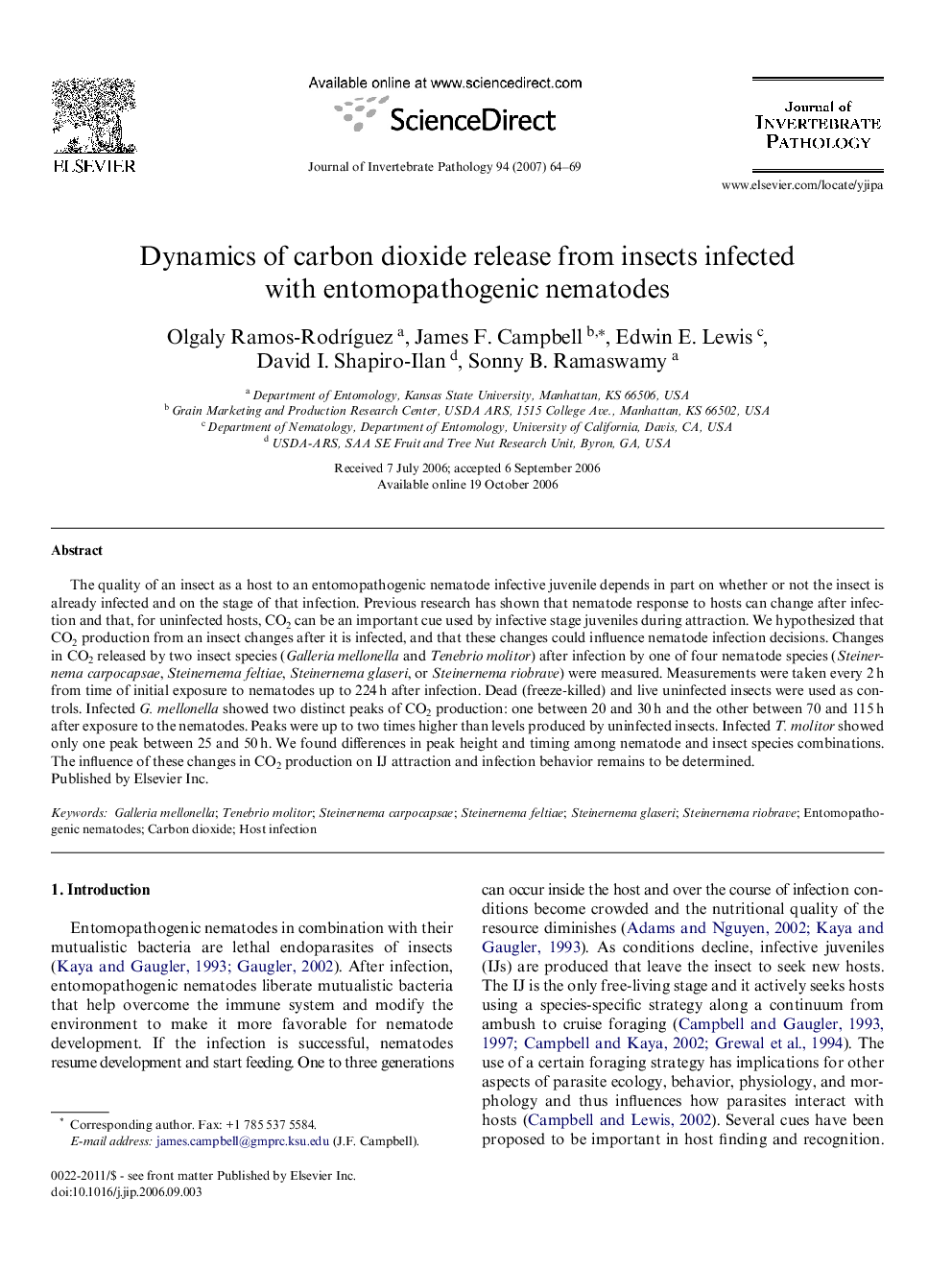| Article ID | Journal | Published Year | Pages | File Type |
|---|---|---|---|---|
| 4558735 | Journal of Invertebrate Pathology | 2007 | 6 Pages |
The quality of an insect as a host to an entomopathogenic nematode infective juvenile depends in part on whether or not the insect is already infected and on the stage of that infection. Previous research has shown that nematode response to hosts can change after infection and that, for uninfected hosts, CO2 can be an important cue used by infective stage juveniles during attraction. We hypothesized that CO2 production from an insect changes after it is infected, and that these changes could influence nematode infection decisions. Changes in CO2 released by two insect species (Galleria mellonella and Tenebrio molitor) after infection by one of four nematode species (Steinernema carpocapsae, Steinernema feltiae, Steinernema glaseri, or Steinernema riobrave) were measured. Measurements were taken every 2 h from time of initial exposure to nematodes up to 224 h after infection. Dead (freeze-killed) and live uninfected insects were used as controls. Infected G. mellonella showed two distinct peaks of CO2 production: one between 20 and 30 h and the other between 70 and 115 h after exposure to the nematodes. Peaks were up to two times higher than levels produced by uninfected insects. Infected T. molitor showed only one peak between 25 and 50 h. We found differences in peak height and timing among nematode and insect species combinations. The influence of these changes in CO2 production on IJ attraction and infection behavior remains to be determined.
